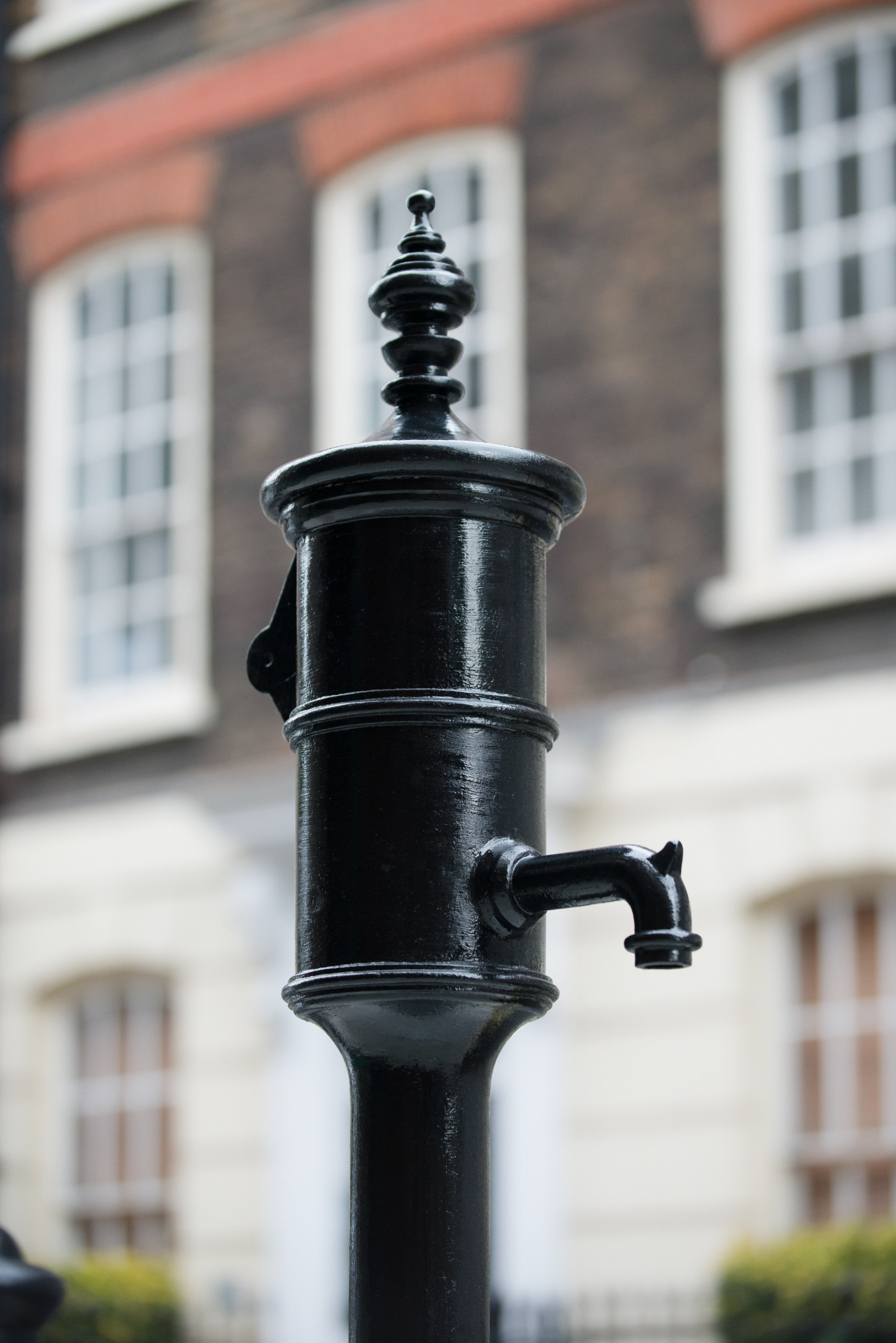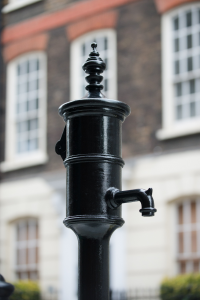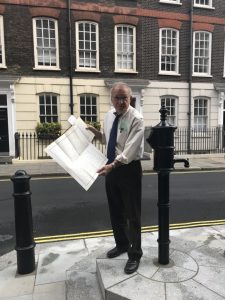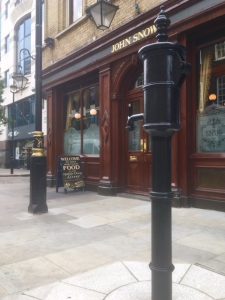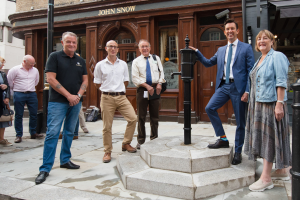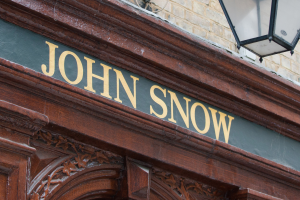Many members will know that the replica pump which was placed by Westminster Council at the corner of Poland and Broadwick Streets in 1992, to commemorate our hero’s work, was removed in 2015 because of construction. The Society has worked tirelessly over the past three years to ensure its return – and to the historically proper position. We can now report success, as the pump, appropriately without handle, was unveiled at its new and correct site on Friday 20th July 2018. A small ceremony took place at 0800 on that day, at which time Dr Ros Stanwell Smith, our Society’s Pumphandle Ambassador, gave a short speech and Councillor Richard Beddoe removed a sheet uncovering the pump. The event led to a storm of approval on social media.
Thank you for reading this post, don't forget to subscribe!The plaque reads as follows:
“Dr John Snow (1813 – 1858) a noted anaesthetist and physician, lived near the focus of the 1854 Soho cholera epidemic, which started in August 1954 in Broad Street, as Broadwick Street was then called. In September of that year more than 500 people died in Soho from the disease.
Snow had studied cholera in the 1848-9 epidemic in South London and developed a novel theory that polluted drinking water caused the disease. He recognised that cholera cases were clustered around the water pump located here and showed it was the cause of the epidemic.
His theory initially met with some disbelief but he convinced the parish council to remove the pump’s handle on 8th September 1854, to prevent its further use. ‘Removal of the pumphandle’ has become an international symbol of public health. The John Snow Society was founded in 1992 to commemorate Snow’s work.
The original pump was situated outside the site where the ‘John Snow’ Public House now stands, and this replica has been returned to its historic location previously marked by a pink granite kerbstone.
This water pump
was unveiled by
Cllr Richard Beddoe
On 20 July 2018
It marks a pioneering example of
medical research in the service of
City of Westminster”
Members with a particular concern for detail will be pleased to note that the pink granite kerbstone has been incorporated into the installation, immediately west of the pump’s plinth.

